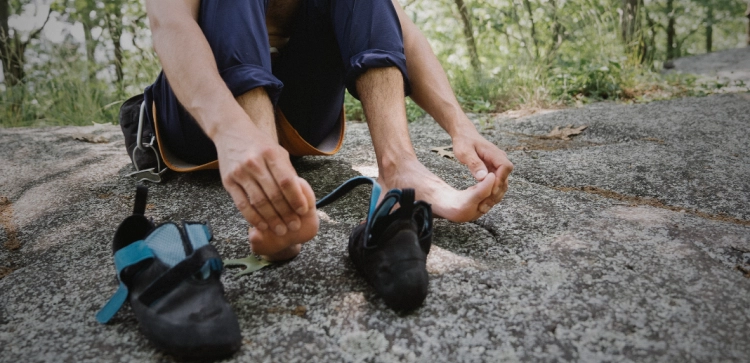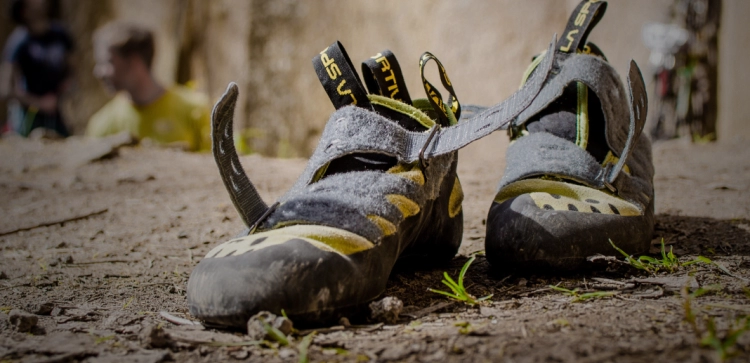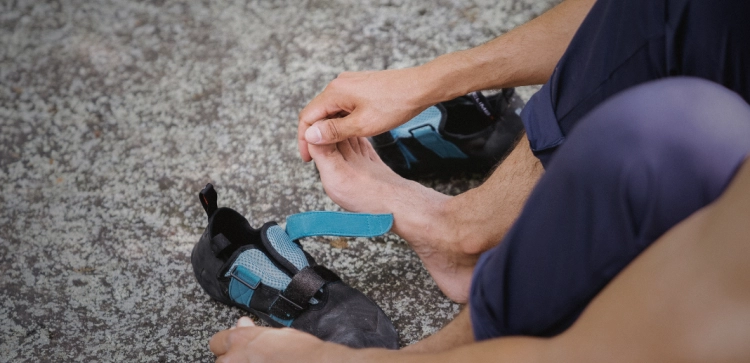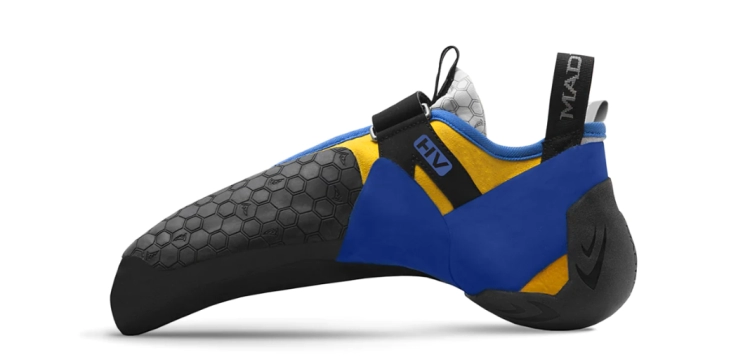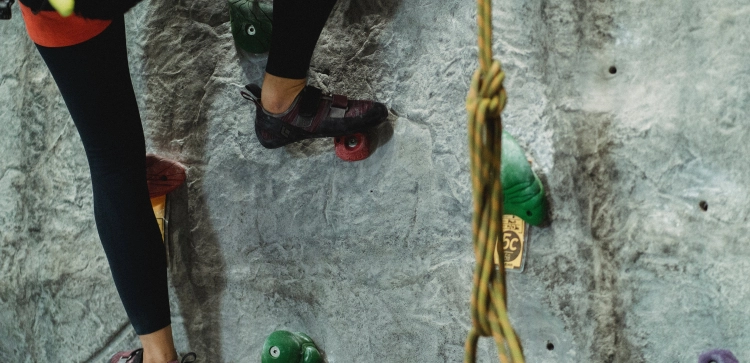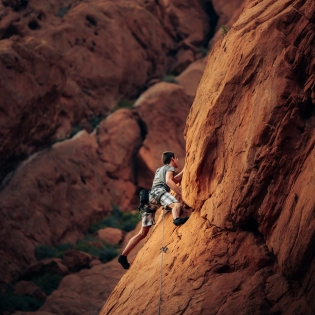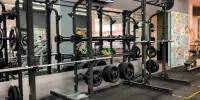Are Your Rock Climbing Shoes Too Big? Tips For A Perfect Fit
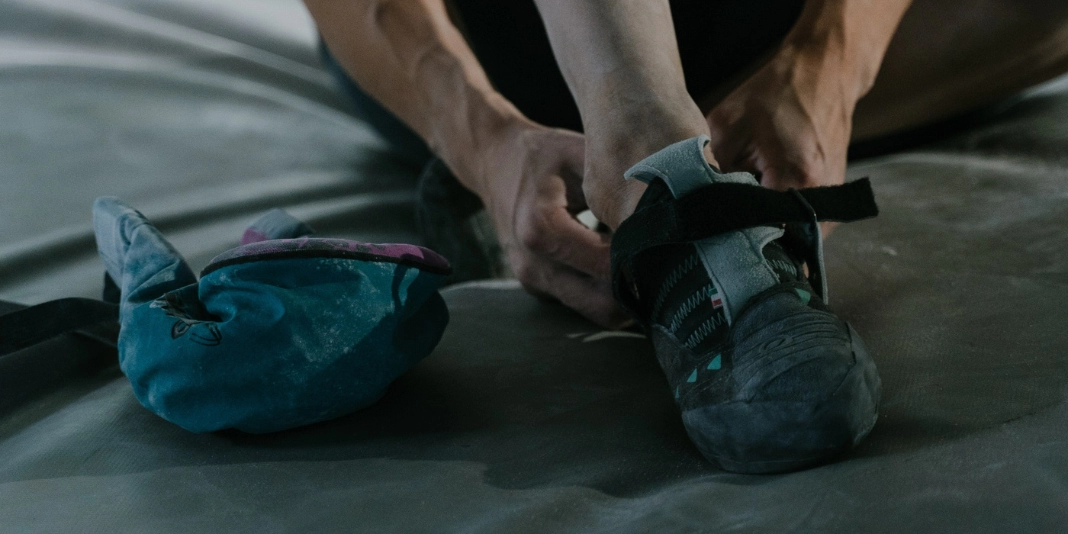
The amount of time I spent thinking if my climbing shoes are too big is not short. While many people downsize their climbing shoes, I tend to go the other way and go up half a size in my climbing shoes. I find this to be a perfect size that combines both performance and comfort. I also have not-so-common feet, they are flat, wide, and have a small heel, so finding shoes that are good for my feet is no easy challenge, especially when it comes to choosing the right size.
This guide is meant for those who, like me, have questioned whether their climbing shoes are too big and if they should size down a little.
- Climbing Shoes That Are Too Big Vs Too Small
- Choosing The Right Climbing Shoes
- Are My Climbing Shoes Too Big?
- Can You Wiggle Your Toes In Your Shoes?
- Does Your Heel Slip Or Move Inside When Using It?
- Are Your Toes Curled Up?
- Do Your Shoes Become Baggy By The End Of The Session?
- Can You Put Your Weight On Small Climbing Holds And Edges?
- Do You Have To Wear Socks With Your Climbing Shoes?
- Is There A Lot Of Dead Space Or Gaps Within The Shoes?
- Conclusion
- Community Questions · 0
Climbing Shoes That Are Too Big Vs Too Small
While there is a lot of attention around climbing shoes being too small and too tight, wearing climbing shoes that are too big can be almost as much of an issue as them being too small.
Climbing shoes that are too big and too loose can result in your feet slipping and sliding inside your shoes. While this can impact your performance, especially on harder routes and projects, this could also lead to injury.
Shoes that are too big can hinder performance by not allowing you to exert the required amount of force from your feet. For example, imagine needing to pull your weight on your heel to keep yourself close to the wall. If your shoes are too big or too loose, your heel could just slip right out of your shoe or off the hold, usually resulting in failing the route and starting over.
Choosing The Right Climbing Shoes
To make sure your climbing shoes are not too big, it is always important to first make sure that you are buying the right shoes for your feet. This includes the type of shoe, the shape, and the size.
As mentioned, my feet are not very common. I had to try on quite a few shoes from different brands until I found shoes that I felt were ok. I tried downsizing, but even in the shoes that fit my feet the most, downsizing was just not an option. I still have not found the perfect shoes for my feet, as finding shoes with a wider toe box and a smaller heel is not very easy, but, I have come to learn what I should look for and consider when buying new shoes. I covered these tips in this guide to buying the right climbing shoes for you.
If your shoes are not right for your feet in the first place, it won’t matter if they are too big or too small, they just won’t be right.
Are My Climbing Shoes Too Big?
To help determine if your climbing shoes are too big, here are a few things you can check to help figure out if you should downsize or not. If you match one or a few of the following points, it may be an indication that your climbing shoes are too big:
Can you wiggle your toes in your shoes?
If you can freely and easily wiggle your toes within your shoes, that is normally a sign that your shoes are too big. Climbing shoes should be snug enough so that your feet and toes won’t move within them. Your toes should be slightly curled at the ends of your shoes. Being able to wiggly them freely means that the shoes are not a correct fit for your toes. Being able to slightly move your toes around may be fine in some cases, but too much wiggle room is a sign that your shoes are too loose.
Does your heel slip or move inside when using it?
Your shoes may be too big, or not the right fit, if when you apply pressure to your heel and pull your weight on it, the following happens:
- You feel as if your heel may slip out of your shoe
- You feel insecure while pulling your weight on your heel
- Your heel moves around in your shoe when you pull or press down
Are your toes curled up?
Toes should be slightly curled in climbing shoes. If your toes are too curled, that may be a sign that the shoes are too small, especially if there is pain involved. On the other hand, if your toes are not curled enough, or at all, that may be a sign that your shoes are too loose.
Having curled toes allows you to apply and exert more force from your toes when standing on small edges. If your toes are not curled, it will be much harder to apply the same amount of force, especially if you need to jump off from small edges or perform any type of dynamic movement from them.
Do your shoes become baggy by the end of the session?
If by the end of your climbing session, you get the feeling that your shoes are very loose and baggy, it may be a sign that they are too big. When first starting a climbing session, your shoes may feel a little bit tighter than they will feel by the end of it. As you climb in them and warm them up, they become slightly softer and expand a little bit. If this is not taken into consideration when buying climbing shoes, then your shoes may become a little bit too loose by the middle or end of your climbing session.
Can you put your weight on small climbing holds and edges?
If you are not able to stand on small foot holds, it may be because your toes are not curled enough. A good way to test this is to find a small edge and try to stand on it with all of your weight.
Of course, this also depends on the type of shoes you have. Softer shoes will be harder to stand on small edges, and stiffer shoes with a more pronounced edge will be easier. In both cases, you should be able to tell if you're relying on your curled toes for standing on the edge, or if it’s the shoes that are doing all the work.
Do you have to wear socks with your climbing shoes?
If you have to wear socks for your shoes to feel tight, that is a pretty clear sign that your shoes are too big, unless, of course, you want to wear socks with your shoes. While you can wear socks with climbing shoes, they were designed to be worn without socks. If you feel like wearing your shoes without socks makes them feel too loose, then they may just be too big.
Is there a lot of dead space or gaps within the shoes?
Climbing shoes are meant to be snug all around the foot, and eventually, to conform to the shape of your foot, depending on the type of shoes. They should fit on like a glove (or like a sock in this case).
Though this is the intention, finding shoes that fit in this way is not very easy. Compromises in the fit are often made, so it’s normal that there will be some gaps and dead space in certain areas of the shoes, but too much dead space is not normal.
To test this, place your heel on a climbing hold, or the floor, as long as you can see the heel as you apply pressure to it. If you see that the heel of the shoe starts to lose its shape, as if being crunched, then the shoe may be too big, or just not a good fit for your feet. This test can be applied to other areas of the shoe as well. If you feel a large gap between the roof of the shoes and your toes, that too may be a sign that they are not right for your feet.
Conclusion
Choosing the right climbing shoes is the first step to ensuring that your shoes will not be too big. But, if you already have climbing shoes and are not sure if they are too big, hopefully, the steps above can help you better understand if they are.
Do you have any tips on how to know if your shoes are too big? Let us know in the comments!

